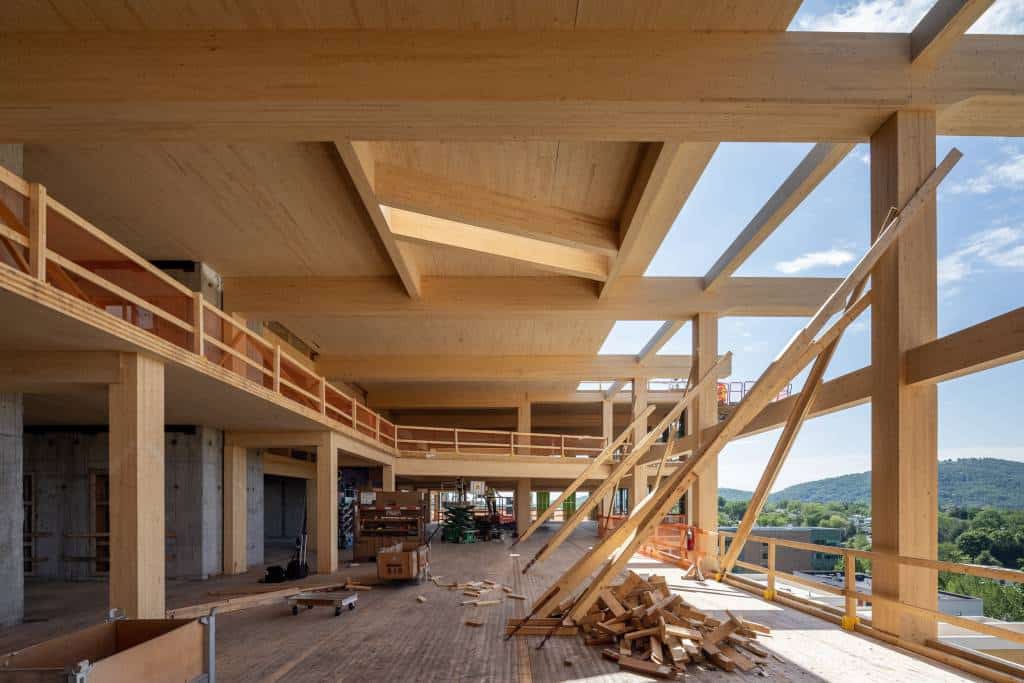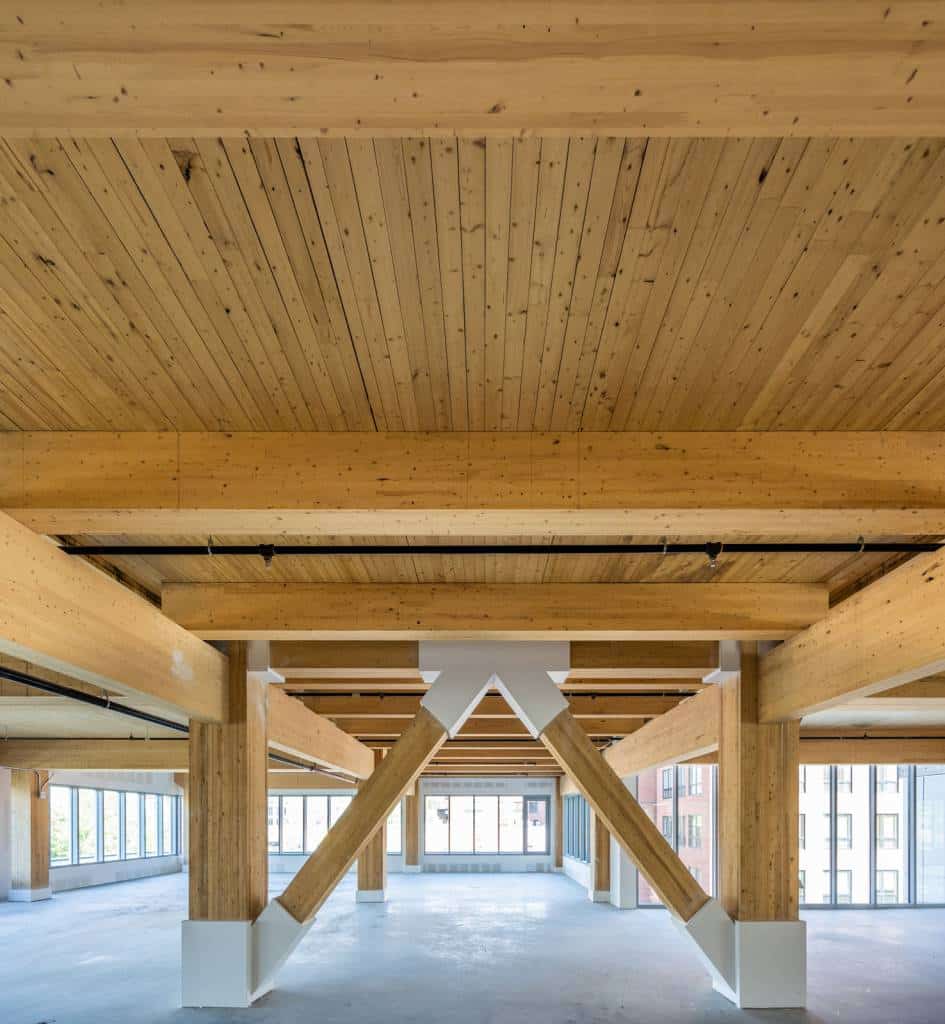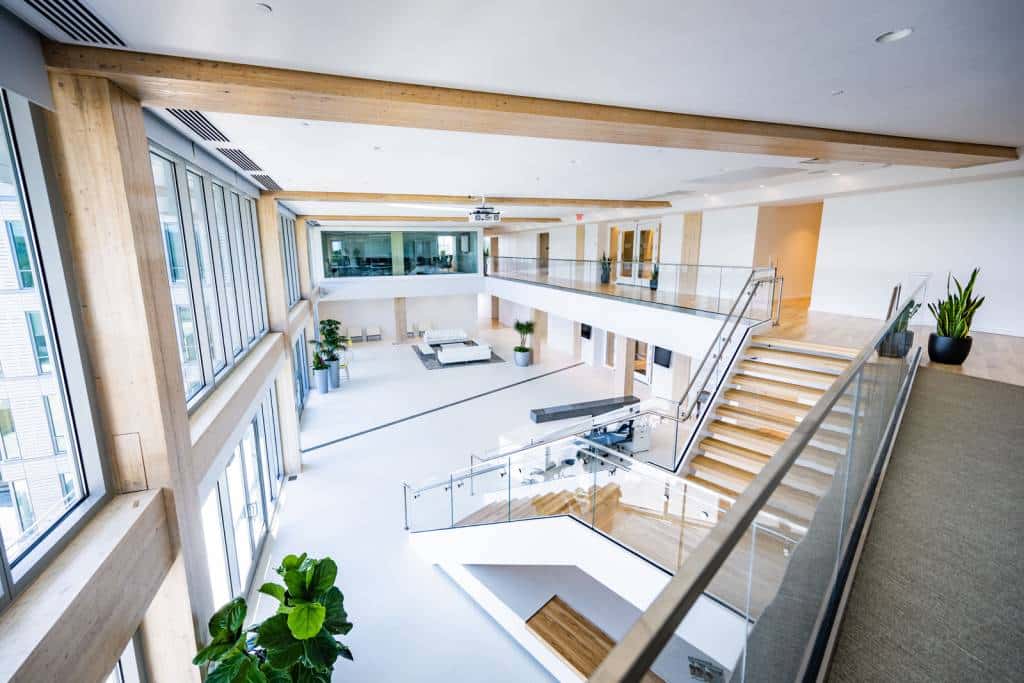Sustainable building practices are becoming a priority for owners and contractors alike. One of the most exciting green building trends in recent years is the use of mass timber, specifically cross-laminated timber (CLT). CLT is a prefabricated, solid engineered wood panel. One panel consists of several layers– typically three, five or seven– of dimensional lumber stacked and glued together at a 90-degree angle. These panels are lightweight yet strong and stable, making CLT a viable alternative to traditional building materials like concrete, masonry, or steel in some instances. These qualities have led to this material’s implementation on large-scale projects across the country. While these building benefits are great for project teams, one being the ease of installation, mass timber offers sustainable solutions like lowering greenhouse gas emissions and improving indoor air quality.

Mass Timber Sequesters Carbon and Lowers Green Houses Gas Emissions
The Global Alliance for Buildings and Construction estimates 11% of greenhouse gas emissions come from building materials and construction. Concrete alone is responsible for 4-8% of the world’s CO2 emissions, as it is the second most widely used substance on earth, second only to water. Concrete also accounts for roughly 85% of all mining and is linked to an alarming depletion of the world’s sand. Taking this into consideration, it seems logical that alternative building materials are critical to reducing GHG emissions.
The ability of mass timber to sequester large amounts of carbon provides an opportunity to turn entire cities into massive carbon sinks as they develop and redevelop. It also offers a sustainable alternative to demolishing worn wooden structures by replacing pieces of wood structures with new timber pieces.
According to Wood for Good, a global wood promotion campaign, a timber building decreases its overall carbon footprint by up to 75% because of its wood-sequestrated CO2. To put this into context, a typical timber house can sequester 19 tons of CO2, meaning building 200,000 timber homes per year would result in over 3.8 million tons of captured CO2. For further context, a single five-story timber building has the potential to cut GHG emissions by levels equivalent to removing as many as 600 cars from the road for a year.
Mass Timber Buildings Improve Indoor Air Quality
Laminated timber products are made up of layers of softwood species such as spruce. Trees used in the manufacturing process efficiently captured carbon as they grew. Once a tree has matured, its carbon-capturing abilities decrease significantly. Towards the end of the tree’s life, it will begin to release the carbon it has been storing for years, either by decaying on the forest floor or through its use in consumer products.

Mass timber stores CO2, releasing oxygen back into the air; thus, buildings constructed of mass timber create cleaner, healthier indoor air quality for its users. One square meter of cross-laminated timber can remove approximately one ton of greenhouse gas from the atmosphere. Timber buildings expel fewer emissions over their lifecycle by emitting less carbon during manufacturing and storing carbon during its use phase. When the trees are sourced from sustainable forests – meaning they are replanted after being harvested – and as long as the wood is recycled when the building is deconstructed, mass timber could prove to be a powerful carbon-negative solution.

Mass Timber is the Future
Not only is CLT structurally viable, but it can result in faster, less expensive projects that ultimately enhance the tenant experience. Building with CLT also cuts construction time significantly when compared to other building materials. Typically, mass timber projects can be completed 4-6 weeks faster — and with a 20-50% smaller crew — than concrete or steel construction. This can add up to significant savings in both schedule duration and labor cost.
This versatile building material is becoming increasingly popular for various types of construction, and with CLT buildings continuing to reach new heights, it is proving to be an ideal option for various types of commercial construction projects.
Previous Post Next Post